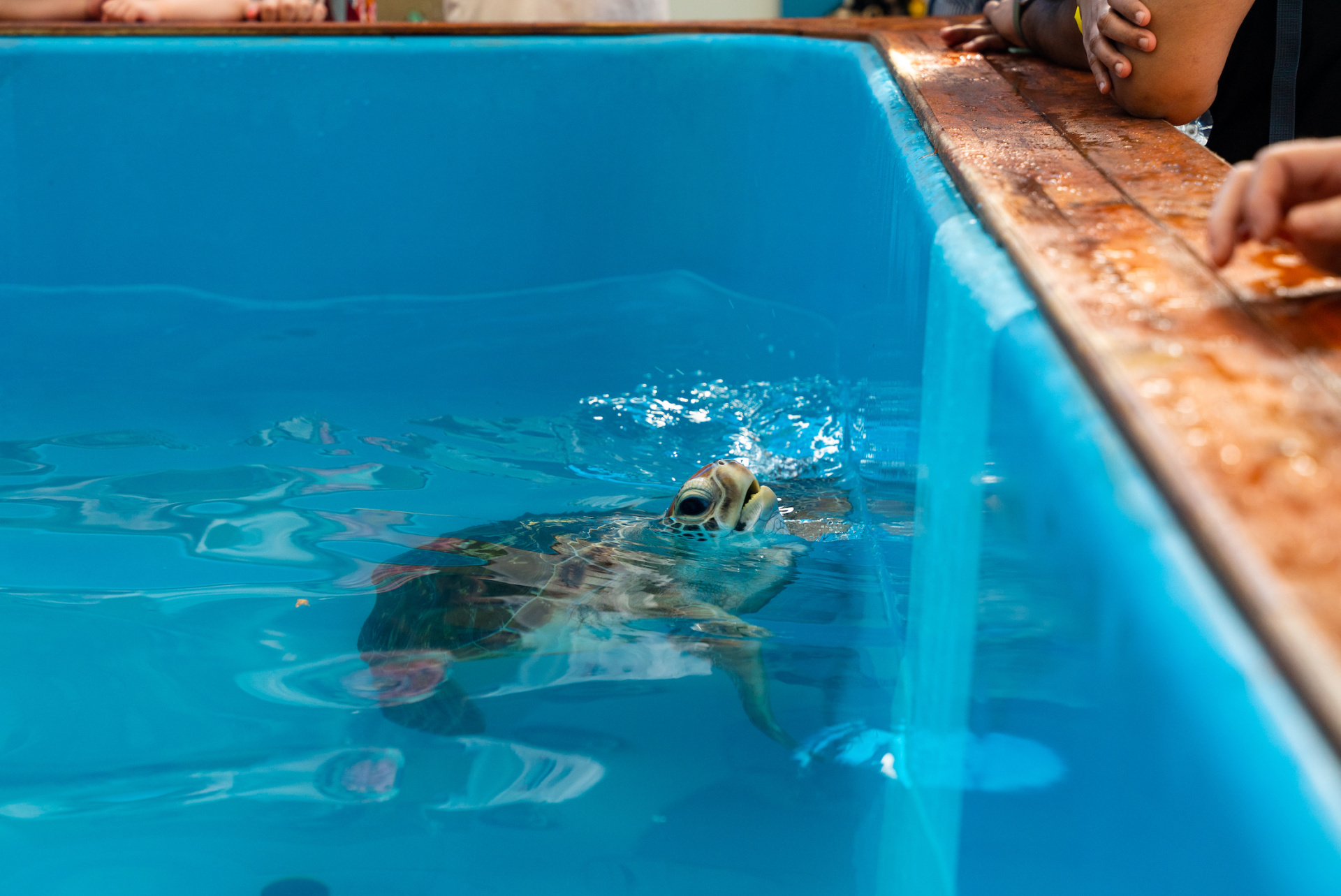
The Fitzroy Island turtle rehab centre is a voluntary-based, non-profit organisation where sick and injured turtles are treated.
The Fitzroy Island turtle Rehabilitation Centre was established in 2000, however with the increase of sick and injured turtles it became apparent that the Cairns centre was not big enough and a new facility was required. The new Turtle Rehabilitation Centre located on Fitzroy Island officially opened in early 2013. This new world-class facility with more room, cleaner water, bigger tanks and an Education Centre has raised the success rate for the rehabilitation of the turtles from 30% to 85%, and is now one of the highest success rates in Australia.
The Sea Turtles are brought into the Cairns rehabilitation centre from the Great Barrier Reef and Cape York Peninsula. The most common turtles we see through the rehab centre are the Green turtle and Hawksbill turtle, these turtles can stay in the centre anywhere between 6 to 24 months until they are healthy enough to be released.
Many of the turtles are brought into the rehab centre with an illness called ‘floaters syndrome’ which is an obstruction that occurs in the turtle’s gut causing air to become trapped between the shell and the body, impacting the animal's ability to dive down to the sea grass beds in order to eat. If these turtles are not found they end up starving to death.
At the rehabilitation centre the turtles are fed daily, when the turtles first arrive at the rehab centre their individual food bill is about $150.00 each week. Sick turtles will spend at least 6 months to recover, some even years. Once the turtle has made a full recovery, a satellite tracker is attached to their shell and we follow the movements of the turtles.
Educational Tours are held on Fitzroy Island every day at 1pm (not on a Friday when the vet visits) and are also subject to availability, please contact Fitzroy Island Resort reception to make a booking.
Magic the Turtle
A stranded Green Turtle initially rescued by Mission Beach Charters became a patient at the Fitzroy Island turtle Rehabilitation Centre. She was suffering from starvation, a common condition seen in rescues in recent years due to the diminishing sea grass beds which are the green sea turtles’ food source.
Local Reef Tour Operator Reef Magic became a sponsor for the patient naming her "Magic". Sponsorship contributes to the protection of turtles providing funds towards the food bill of the turtle patients. After spending her time fattening up in Tank 1 at Tingira Street, Magic was the first turtle to be released with a tracker. We are following Magic's movements and hope she will reproduce in large numbers.
Turtles found on the Great Barrier Reef
Six of the world’s seven species of marine turtle occur in Australian waters, including the:
Sea Turtle Trivia